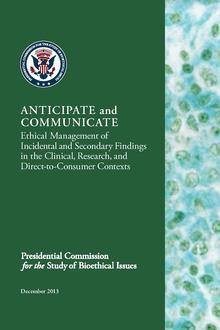Incidental medical findings
Incidental medical findings are previously undiagnosed medical or psychiatric conditions that are discovered unintentionally and during evaluation for a medical or psychiatric condition. Such findings may occur in a variety of settings, including routine medical care, during biomedical research,[1] during post-mortem autopsy,[2] or during genetic testing.[3]

Medical imaging
An incidentaloma is a tumor found by coincidence which is often benign and does not cause any clinically significant symptoms; however a small percentage do turn out to be malignant. Incidentalomas are common, with up to 7% of all patients over 60 harboring a benign growth,[citation needed] often of the adrenal gland, which is detected when diagnostic imaging is used for the analysis of unrelated symptoms.
As 37% of patients receiving whole-body CT scan may have abnormal findings that need further evaluation and with the increase of "whole-body CT scanning" as part of health screening programs, the chance of finding incidentalomas is expected to increase.[5]
Neuroimaging
Incidental findings in neuroimaging are common, with the prevalence of neoplastic incidental brain findings increasing with age. [6] Even in healthy subjects acting as controls in research incidental findings are not rare.[7] As most neuroimaging studies are performed in adults, less is known about the prevalence incidental findings in children.[8] A study in 2017 in nearly 4000 children between 8 and 12 reported that approximately 1 in 200 children showed asymptomatic incidental findings that required clinical follow-up.[9]
Pituitary adenomas are tumors that occur in the pituitary gland, and account for about 15% of intracranial neoplasms. They often remain undiagnosed, and are often an incidental finding during autopsy. Microadenomas (<10mm) have an estimated prevalence of 16.7% (14.4% in autopsy studies and 22.5% in radiologic studies).[10][11]
Genetic testing
Unintentional genetic findings (aka "incidentalomes"[12]) are more commonly encountered with the advent of biomedical technologies capable of quickly and reliably performing genomic analysis, such as whole-genome sequencing. As with medical imaging, the capacity to measure biologic information in the form of genetic variation may exceed the scientific understanding of what the findings mean.
In 2013, the American College of Medical Genetics and Genomic Working Group on Incidental Findings published preliminary guidelines for clinical laboratories that perform clinical exome and genome sequencing. They outlined a list of "medically actionable" pathogenic gene mutations, mostly monogenetic or single-gene disorders, which were significantly associated with important medical diagnoses and which should be reported to the patient "regardless of the proband’s phenotype or age".[13]
References
- ^ Wolf S.M.; Paradise J.; Caga-anan C. (2008). "The Law of Incidental Findings in Human Subjects Research". Journal of Law, Medicine & Ethics. 36 (2): 361–383. doi:10.1111/j.1748-720X.2008.00281.x. PMC 2581517. PMID 18547206.
- ^ Light TD, Royer NA, Zabell J, et al. (2011). "Autopsy after traumatic death--a shifting paradigm". J Surg Res. 167 (1): 121–4. doi:10.1016/j.jss.2009.07.009. PMC 2891351. PMID 20031159.
- ^ Clayton EW (2008). "Incidental findings in genetics research using archived DNA". J Law Med Ethics. 36 (2): 286–91. doi:10.1111/j.1748-720X.2008.00271.x. PMC 2576744. PMID 18547196.
- ^ Couzin-Frankel, Jennifer (2013). "President's Bioethics Panel Weighs in on How U.S. Should Handle Incidental Findings". news.sciencemag.org. Retrieved 13 December 2013.
- ^ Furtado CD, Aguirre DA, Sirlin CB, et al. (2005). "Whole-body CT screening: spectrum of findings and recommendations in 1192 patients". Radiology. 237 (2): 385–94. doi:10.1148/radiol.2372041741. PMID 16170016.
- ^ Ladd SC, Warlow C, Wardlaw JM, et al. (Aug 2009). "Incidental findings on brain magnetic resonance imaging: systematic review and meta-analysis". BMJ. 339: b3016. doi:10.1136/bmj.b3016. PMC 2728201. PMID 19687093.
- ^ Cramer SC, Wu J, Hanson JA, et al. (Apr 2011). "A system for addressing incidental findings in neuroimaging research". NeuroImage. 55 (3): 1020–3. doi:10.1016/j.neuroimage.2010.11.091. PMC 3057347. PMID 21224007.
- ^ Maher CO, Piatt JH (Apr 2015). "Incidental findings on brain and spine imaging in children". Pediatrics. 135 (4): e1084 – e1096. doi:10.1542/peds.2015-0071. PMID 25825535. S2CID 1640089.
- ^ Jansen PR, van der Lugt A, White T (Oct 2017). "Incidental Findings on Brain Imaging in the General Pediatric Population". New England Journal of Medicine. 377 (16): 1593–1595. doi:10.1056/NEJMc1710724. hdl:1887/92310. PMID 29045203.
- ^ Ezzat S, Asa SL, Couldwell WT, Barr CE, Dodge WE, Vance ML, McCutcheon IE (August 2004). "The prevalence of pituitary adenomas: a systematic review". Cancer. 101 (3): 613–9. doi:10.1002/cncr.20412. PMID 15274075. S2CID 16595581.
- ^ Asa SL (August 2008). "Practical pituitary pathology: what does the pathologist need to know?". Arch. Pathol. Lab. Med. 132 (8): 1231–40. doi:10.5858/2008-132-1231-PPPWDT. PMID 18684022. Retrieved 2008-09-03. [dead link]
- ^ Kohane, Isaac S.; Masys, Daniel R.; Altman, Russ B. (2006-07-12). "The Incidentalome". JAMA. 296 (2): 212–5. doi:10.1001/jama.296.2.212. ISSN 0098-7484. PMID 16835427. S2CID 2063402.
- ^ Green, Robert C.; Berg, Jonathan S.; Grody, Wayne W.; Kalia, Sarah S.; Korf, Bruce R.; Martin, Christa L.; McGuire, Amy L.; Nussbaum, Robert L.; O’Daniel, Julianne M. (July 2013). "ACMG recommendations for reporting of incidental findings in clinical exome and genome sequencing". Genetics in Medicine. 15 (7): 565–574. doi:10.1038/gim.2013.73. ISSN 1530-0366. PMC 3727274. PMID 23788249.
